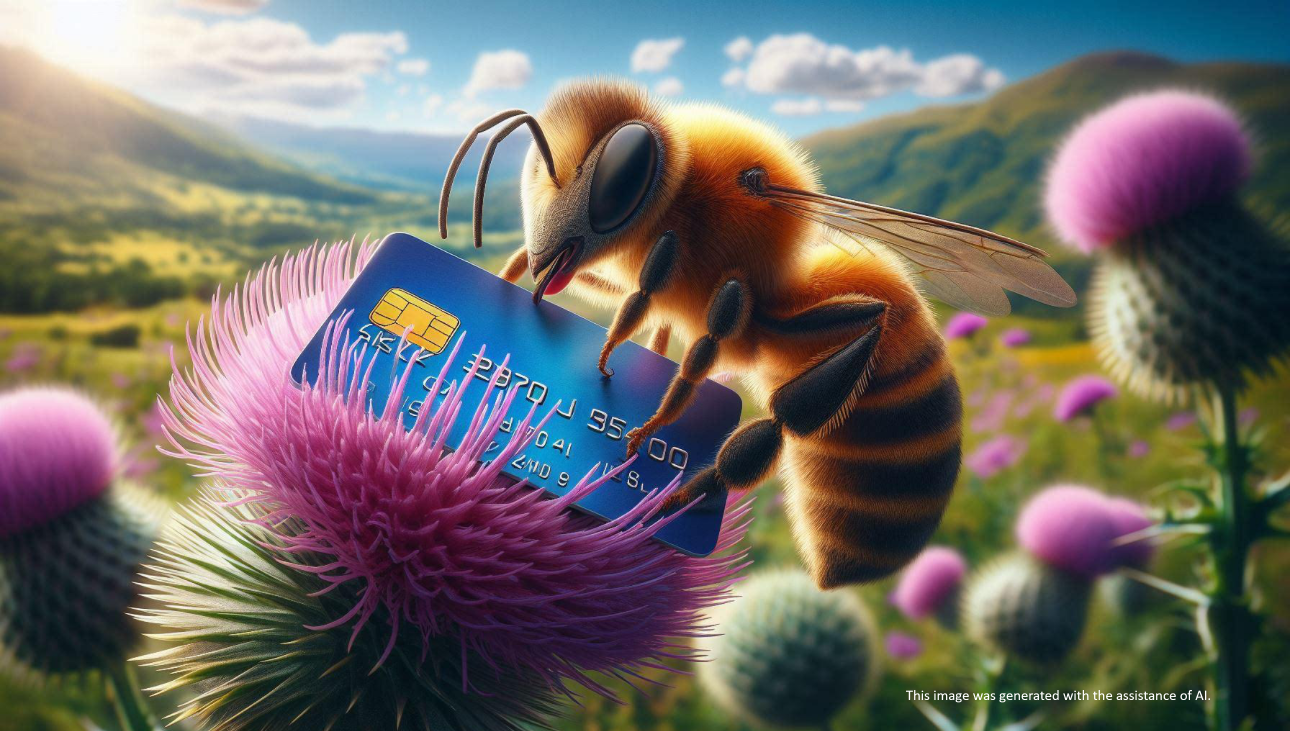Economic Thistles
Submitted by Atlas Indicators Investment Advisors on May 31st, 2024
Thistles are plants that can spread rapidly across a landscape. They are a resilient weed that have evolved to survive in some of the harshest conditions. A thistle is thorny and can cause discomfort if one is not careful. Before we paint them with too broad a brush, however, its worth noting that they have some redeeming qualities. They provide a food source for some wildlife (bees come to mind). They also have roots, so they can help combat erosion.
Credit cards have some similar traits. For instance, their use can also spread rapidly across an economic landscape. They typically come with high interest rates if not paid fully each month that can leave users feeling pricked if they aren’t careful. Like thistles, though, they aren’t all bad. For instance, many firms offer rewards for using them, somewhat analogous to the pollen a bee might find. They can also be a convenient source of credit if one comes up short from time to time.
Debt can have a dark side too. According to new research noted on the New York Federal Reserve’s Liberty Street Economics blog, some credit card borrowers are showing signs of financial stress (click here to read the full note). Their findings suggest those who have balances nearing their maximum level are disproportionately delinquent on payments. The percent of maxed-out borrowers is now approaching pre-pandemic levels, but this time an even higher ratio of those accounts are delinquent.
Proper oversight is key to keeping both thistles and credit cards from becoming overwhelming. If left unmanaged, thistles crowd out other plants and becoming increasingly more difficult to control. Credit card’s ease of access can lead to overuse and debt accumulation. Then their high rates can exacerbate borrowers’ problems, competing for the wallet share of indebted consumers. Given the upturn in delinquencies, Atlas believes this weed is worth watching going forward because it could impact the health and therefore growth of America’s economy.

